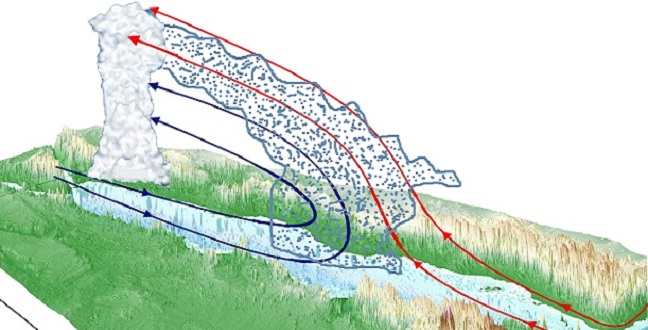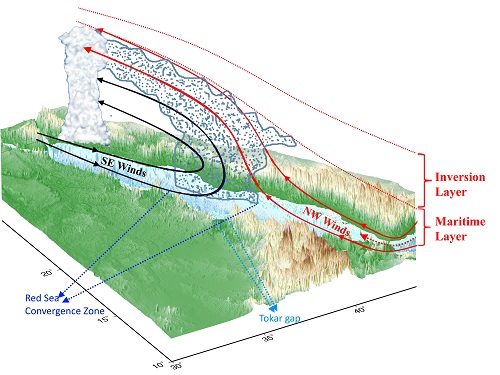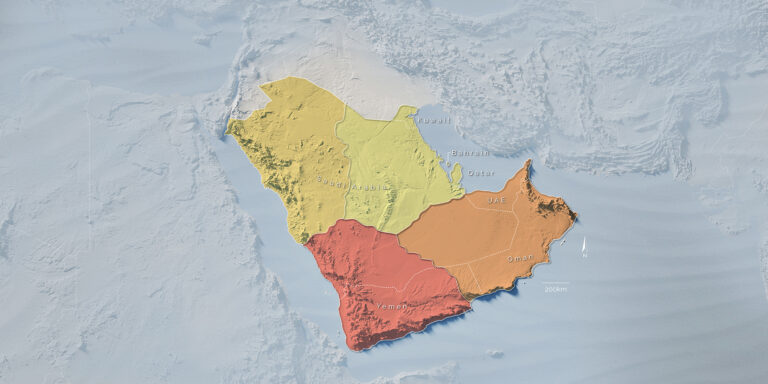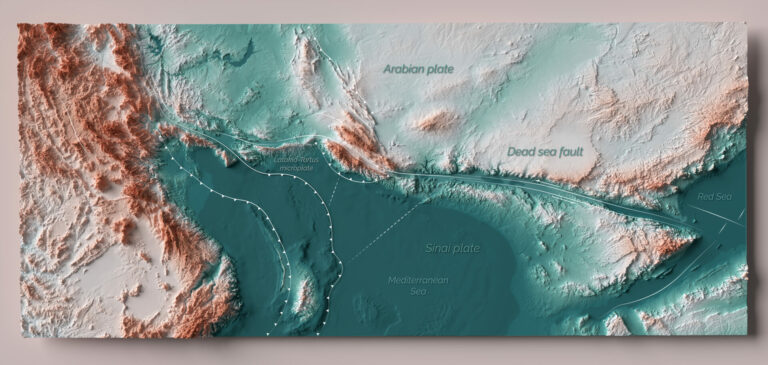Earth Science and Engineering
More rain for the Red Sea if El Niño breezes in
Modeling leads to a better understanding of the role El Niño plays in increasing rainfall along the coast of the Red Sea.


Vertical structure of the winter wind circulation over the Red Sea depicts the Red Sea Convergence Zone and the transport of moisture to the northern regions.
© 2017 KAUST
The El Niño Southern Oscillation (ENSO) has been shown, for the first time, to play a role in increased rainfall and storms along the Red Sea and surrounding regions.
During the winter months, from October to March, the northern Red Sea experiences northwesterly winds from the Mediterranean and southeasterly winds from the Gulf of Aden. These winds form the Red Sea Convergence Zone (RSCZ), an area characterized by cloudy skies and drizzle that contrasts with the typically clear weather of the region.
Associate Professor of earth science and engineering Ibrahim Hoteit and colleagues at KAUST have explored how the intensity and position of the RSCZ affects rainfall during the winter months and how it is influenced by the ENSO.
“The Red Sea is a narrow basin; thus, it requires high spatially resolved data to accurately describe variations in the RSCZ,” explains Hoteit. “This means we require extensive and accurate datasets to assess the influence of the ENSO variability on the region’s rainfall.”
The team modeled rainfall patterns between 1979 and 2016. This involved combining data from a number of datasets from NASA’s ERA-Interim, a global atmospheric reanalysis, and the Advanced Very High Resolution Radiometer for sea surface temperatures with satellite data from the Tropical Rainfall Measuring Mission and the Asia focused APHRODITE, a dataset containing gridded daily precipitation.
Using data on wind speeds and patterns, the researchers first identified the position and intensity of the RSCZ and the locations of the associated high- and low-pressure systems. Then, to explore the mechanisms responsible for rainfall, they analyzed variables, such as convective available potential energy, total column perceptible water vapor and evaporation.
“Because rainfall intensity is associated with the meeting of different water-vapor fluxes, we used a moisture budget analysis to identify the sources of moisture and to estimate the amount of rainfall in the region,” says Hari Dasari, the first author of the study.
They found that the RSCZ shifts northward during the warming El Niño phase of the ENSO, transporting more moisture from the Arabian Sea and increasing the number of rainy days and the intensity of rain events. This results in cooler than normal air from the North combining with warm air from the South over the RSCZ.
“We are working on building advanced models for short- and long-term predictions as well as investigating how changes in the global circulation patterns during ENSO years are connected with the Red Sea weather and climate, and vice-versa,” explains Hoteit.
References
-
Dasari, H. P., Langodan, S., Viswanadhapalli, Y., Vadlamudi, B. R., Papadopoulos, V. P. & Hoteit, I. ENSO influence on the interannual variability of the Red Sea convergence zone and associated rainfall. International Journal of Climatology 38 (2018).| article
You might also like

Earth Science and Engineering
Sensing color cues to monitor coral health in the Red Sea

Earth Science and Engineering
Kahramanmaraş earthquake study showcases potential slip rate errors

Chemical Engineering
Unveiling the role of biomass-burning aerosols in atmospheric reactions

Earth Science and Engineering
Feeling the heat across the Middle East

Applied Mathematics and Computational Sciences
Past and future drought patterns across the Arabian Peninsula

Earth Science and Engineering
Fewer major earthquakes for the northern Dead Sea Fault

Applied Mathematics and Computational Sciences
Measuring the impact of desert greening

Applied Mathematics and Computational Sciences



